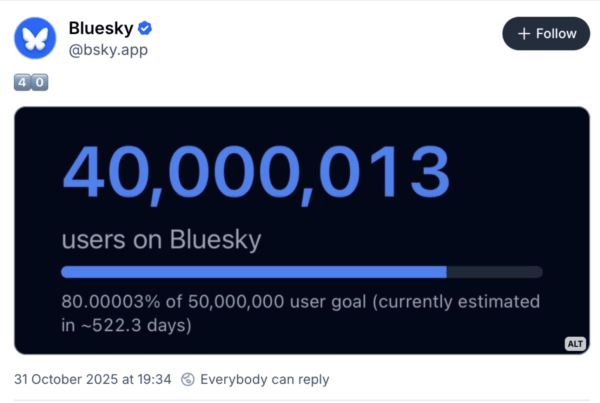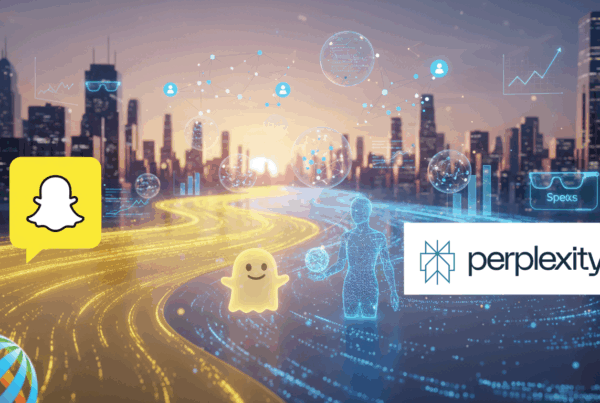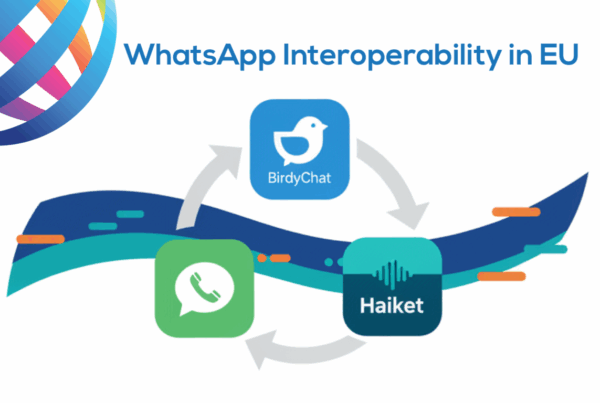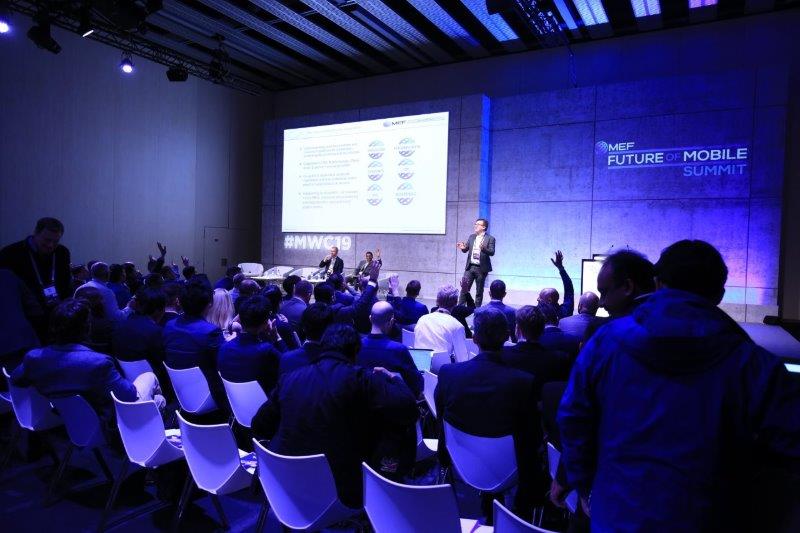ChatGPT has quickly moved from novelty to everyday tool, shaping how people approach work, learning, and creativity. OpenAI’s first user study opens a window into this shift, exploring how adoption is unfolding across different settings. MEF CEO Dario Betti takes a look at the early findings and what they might mean for the future.
On September 15, 2025, OpenAI published its first in-depth research examining how individuals and organizations use ChatGPT. This paper, How People Use ChatGPT, represents the company’s attempt to document patterns of adoption, evaluate user behaviours, and provide a foundation for policymakers, industry leaders, and educators to understand the role of generative AI in daily life and professional contexts.
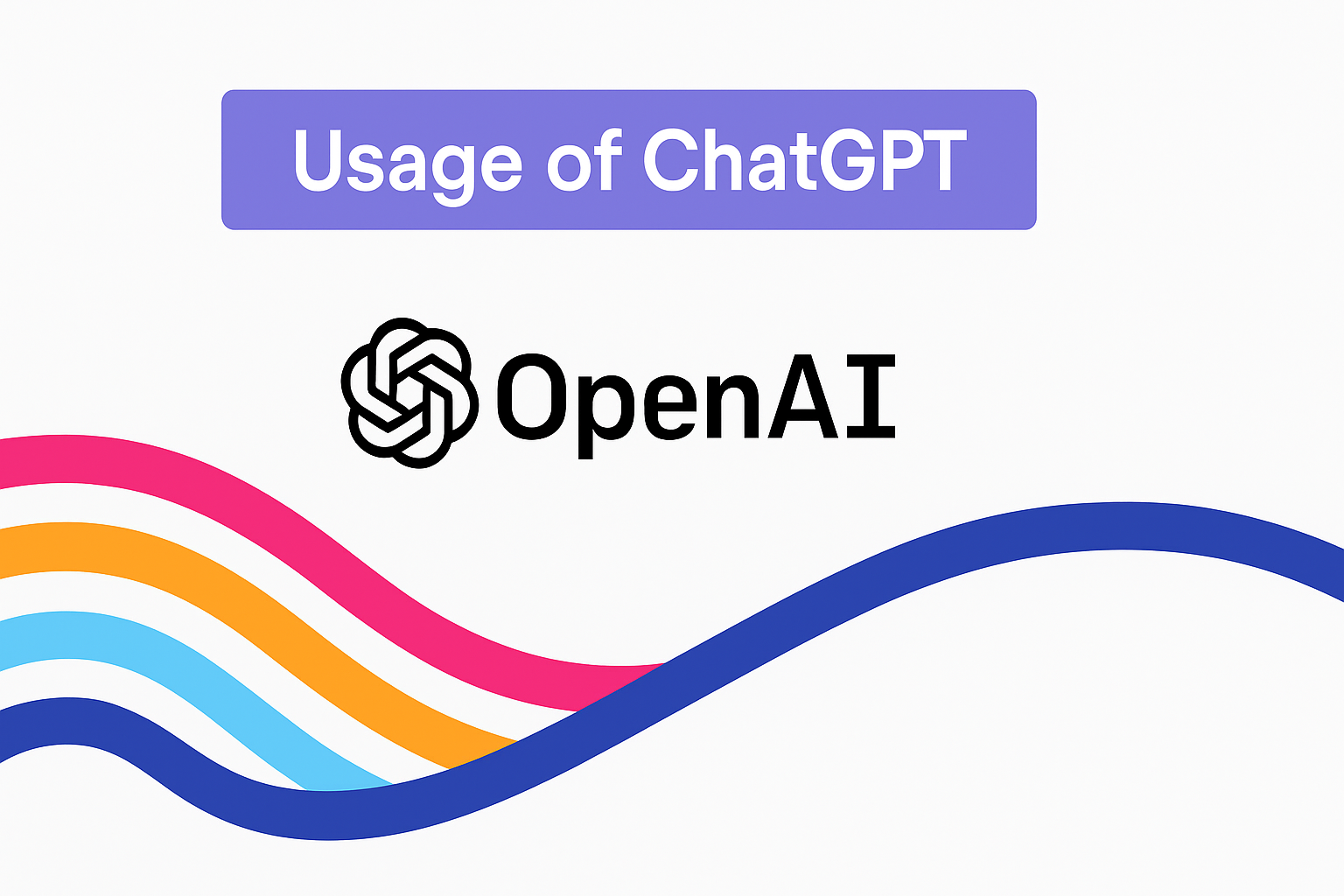
The report, produced by a team of economists and social scientists, combines survey data, anonymized usage statistics, and interviews. While many findings confirm what industry observers might expect—that ChatGPT is used across work, education, and creative fields—the research also uncovers important nuances in frequency, motivation, and impact.
Interpreting the Findings
For the broader mobile and digital ecosystem, several implications stand out:
- Shift toward professional augmentation – Generative AI is being embedded not as a replacement for workers, but as a complement to their productivity.
- Education as a frontier – The educational sector emerges as a proving ground for responsible AI adoption. Teachers, institutions, and students are experimenting at scale, which may shape norms in other industries.
- Programming as an anchor use case – The high share of technical use illustrates how AI is reshaping software development, potentially accelerating innovation cycles.
- Early signs of healthcare potential – Although still modest, healthcare adoption signals that AI may expand into regulated and sensitive domains sooner than some expect.
The report ultimately underscores that generative AI’s trajectory is not about replacing human work, but about redefining its contours.”
The report ultimately underscores that generative AI’s trajectory is not about replacing human work, but about redefining its contours. Where the technology thrives is in taking friction out of routine processes such as drafting, summarizing, coding. It seems to be let people use judgment, creativity, and human interaction. The most profound change may not be in the tasks ChatGPT performs, but in how it reshapes expectations of efficiency and fluency in the digital age.
As adoption widens, the challenge will be to balance productivity gains with ethical and social safeguards. If the first chapter of ChatGPT’s story has been about curiosity and experimentation, the next will be about accountability and trust.
Key Patterns of Use
OpenAI’s research highlights that ChatGPT is no longer a niche tool. Instead, it has entered mainstream workflows across personal and professional settings. The study classifies usage into several broad categories, capturing how individuals interact with the system in both structured and ad hoc ways.
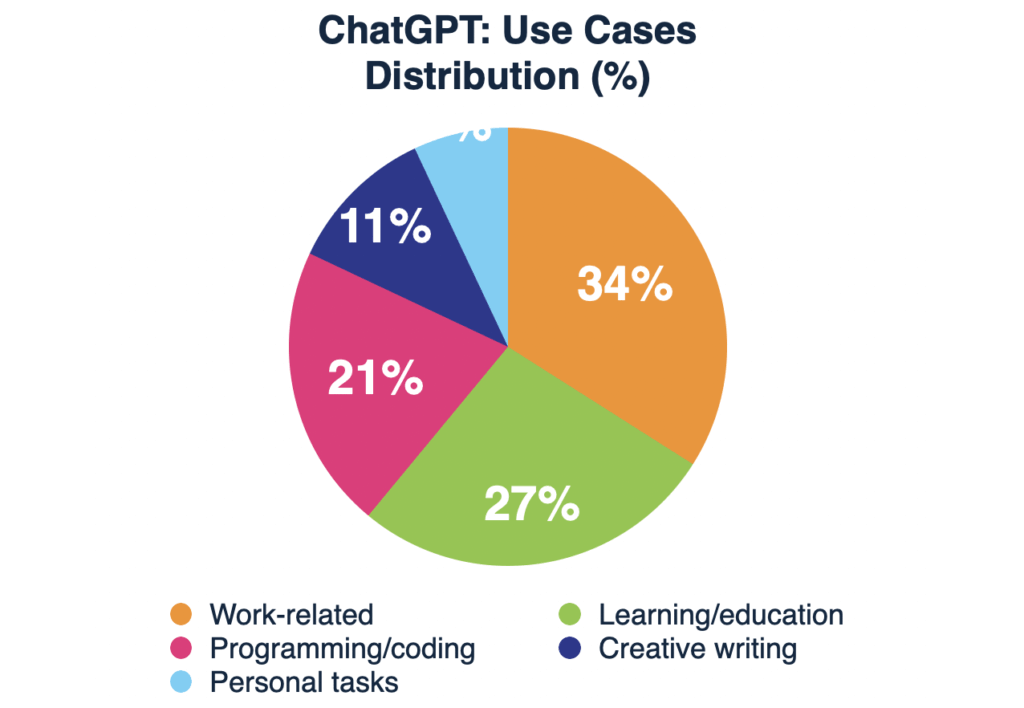
A third of all reported interactions are work-related. This includes drafting professional documents, summarizing materials, generating presentations, and supporting decision-making. Education and learning represent the second largest category: students and self-learners use ChatGPT for explanations, practice problems, and language learning. Programming and coding account for a substantial share (21%), reflecting the model’s strength in technical problem-solving.
Interestingly, personal tasks—such as meal planning or travel advice—are a relatively small slice of the overall usage. This suggests that despite media portrayals of “AI assistants” in daily life, the technology’s uptake has been most significant where it complements productivity, not leisure.
Professional Adoption by Sector
The report breaks down professional use of ChatGPT by industry. Not surprisingly, adoption is strongest in education and technology, where experimentation and digital literacy are high. Professional services—such as consulting, legal, and financial advisory—also feature prominently, reflecting the demand for tools that streamline analysis and client communication.
Table 2: Professional Usage by Secto
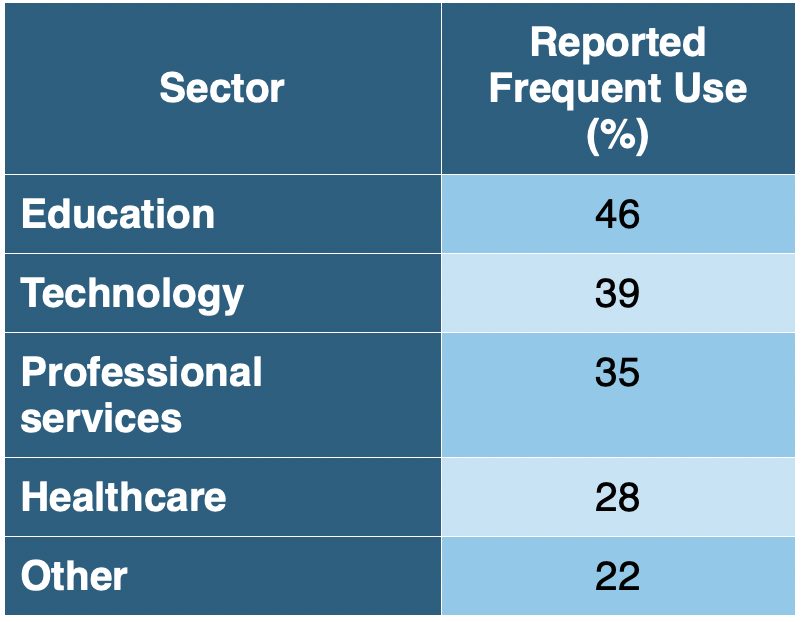
In education, nearly half of surveyed professionals report frequent use, often in tasks such as lesson preparation or student engagement. Technology workers use ChatGPT to accelerate coding, debugging, and documentation. Healthcare, while lower, still shows meaningful uptake: clinicians and administrators experiment with AI for documentation, patient communication, and training.
Broader Trends in Adoption
Several broader trends emerge from the research:
- Generational divides – Younger professionals and students are the most intensive users, but uptake among mid-career professionals is accelerating.
- Productivity framing – Users increasingly describe ChatGPT as a “time saver” rather than a novelty. Its role is shifting from experimentation to embedded workflow.
- Creative vs. technical balance – While much public attention has focused on AI’s creative abilities, data suggests its strongest pull remains in technical and task-oriented contexts.
- Emerging institutional adoption – The report notes that organizations are beginning to formalize guidelines for AI use, marking a transition from individual experimentation to enterprise integration.
Criticism and Limitations of the Data
While the report is a welcome contribution, several limitations stand out:
- Geographic skew – Most data comes from North America and Europe. Adoption patterns in Asia, Africa, and Latin America may differ significantly, yet are underrepresented.
- Short time window – The data reflects a relatively early stage of generative AI adoption. Longitudinal studies will be needed to capture sustained usage and long-term effects.
- Lack of counterfactuals – The report highlights how people use ChatGPT, but not necessarily what they would do without it. The productivity benefits are assumed, not measured.
- Enterprise opacity – Although organizational use is acknowledged, the data is far more robust for individual adoption. The extent of corporate integration remains somewhat speculative.
These caveats are not unusual for a first study, but they underscore the need for more robust work in the following years.
Conclusion: Beyond the First Snapshot
OpenAI’s How People Use ChatGPT report offers a valuable first snapshot of generative AI adoption. The findings confirm what many suspected: that the technology is embedding itself in professional life, particularly in education, technology, and programming. They also highlight the surprising imbalance between productivity-driven and personal uses, showing that ChatGPT is less of a lifestyle assistant and more of a workplace companion.
That said, this is still an early-stage picture. The lack of longitudinal data, geographic breadth, and hard productivity metrics makes it difficult to draw firm conclusions about long-term impact. For industry stakeholders, the report should be seen less as a definitive account and more as a baseline for further research.


